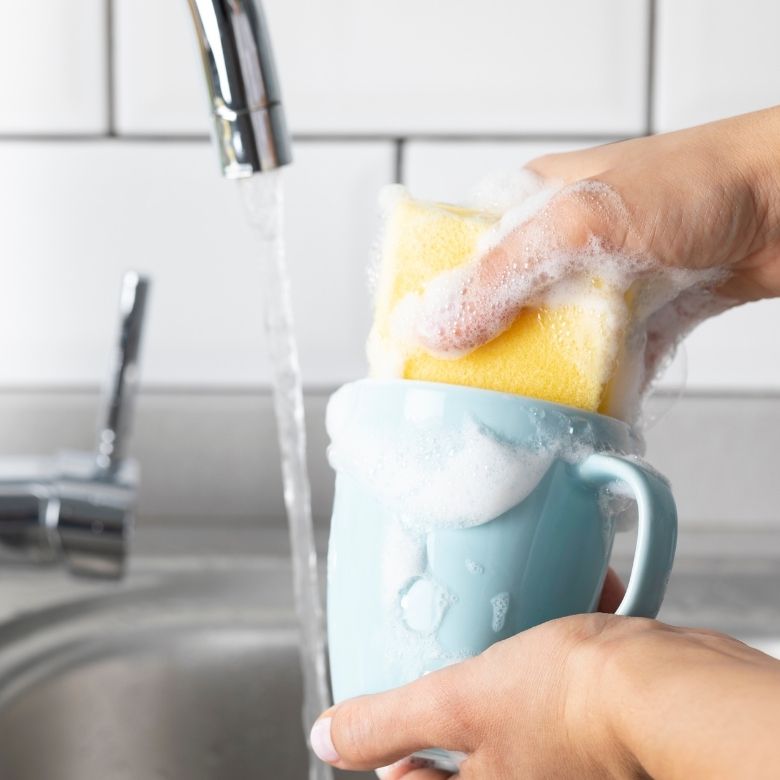There are things that everyone has at home. One of such essentials are cleaning detergents. Even though dishwashers are common nowadays, the popularity of hand dishwashing liquids has not changed at all. Right after laundry detergents, they are the largest group of household chemicals. This is due to a number of factors. Some consumers still prefer hand washing, especially for small quantities of dishes. Some items are not dishwasher safe, and on top of thatdishwashing detergents have many alternative uses. In this article, you will learn what dishwashing liquids consist of and what else they can do for you.

So what is the chemical composition of dishwashing detergents?
Dishwashing liquids, like the entire household chemicals market, come in a varied range of products. So how do people choose a particular product? When you enter a store, one of the first things you more or less consciously pay attention to is the appearance of the product. However, even the best-looking, aesthetic product does not warrant the expected effects. Therefore, products of this type are required to have adequate performance properties such as:
- high efficiency in grime removal;
- no smudges or streaks on the cleaned surface;
- good foaming properties,
- high product efficiency;
- adequate consistency;
- easy rinsing of washed dishes;
- non-toxicity and safety for the skin.
There are three main mechanisms for removing dirt from hard surfaces. These include chemical, mechanical and detergent actions. Manual dishwashing is done primarily by mechanical action, using warm water and detergent.
An important role in obtaining a product with the expected parameters is played by the choice of surfactants. Dishwashing liquids contain anionic, nonionic, and small amounts of amphoteric surfactants. The former are typically found as the primary product ingredient and are responsible for wetting, degreasing and foaming. Nonionic surfactants improve the functional properties of liquids, so they act as surfactant auxiliaries. Finally, the role of amphoteric surfactants is to regulate viscosity and improve foaming properties. In addition to the said substances, hand dishwashing products also contain many additives that not only enhance the effectiveness of the product but also add clarity, colour or fragrance.
They have good foaming properties, but can do much more.
Dishwashing liquids, as the name implies, serve us primarily to clean dirty dishes. It is, however, worth to note that they have many more applications. You can use the dishwashing liquid to get rid of greasy stains from various types of surfaces, such as fabrics, kitchen floors, bathroom floors, kitchen cabinets, and paving stones. In addition, combined with water, it will work well when cleaning carpets, windows, garden furniture, patio furniture, plastic items, jewellery and as a windshield washer fluid, and combined with baking soda, it will perfectly clean everyday objects made of stainless steel. This way you can make many things perfectly clean and reduce dust accumulation. But that’s not all! Many people struggle with fruit flies at home. Some water, vinegar and a few drops of dishwashing liquid can help you solve the problem. Another use for these products is weed control. When you mix the dishwashing liquid with vinegar and salt, you will get an effective remedy to eliminate unwanted plants. As you can see, dishwashing detergents have many more applications than their name implies, so it’s always good to know a few of them.

PCC Group product range
The product range of the PCC Group includes ready-to-use hand dishwashing liquids and non-ionic surfactants used for the production of detergents, including dishwashing products.
Nonionic surfactants used for the production of dishwashing liquids include products such as ROKAnol® L4, ROKAnol® L7, ROKAnol® L10, which demonstrate compatible and synergistic cleaning and cleansing effects when mixed with other types of surfactants. Our anionic surfactants include Rosulfan A70, which acts as a thickener and demonstrates very good foaming properties, and the popular SULFOROKAnol L270/1. The latter product is an ideal match for formulations with other anionic, nonionic and amphoteric surfactants and has excellent foaming properties.
As far as ready-to-use products are concerned, we offer a range of FLO® products. Their concentrated formula makes them highly effective and efficient. They are produced with readily biodegradable surfactants and are phosphate and paraben free so they do not irritate the skin on your hands. For professional applications, we recommend ROKO® PROFESSIONAL ROMIKOL.
With the environment in mind, the product range of the PCC Group was extended to include an environment-friendly dishwashing liquid – CAMOLIN® Gruszka & Agrest. It is a natural, organic, vegan product that contains 98% of natural ingredients. What is more, the product has been awarded the Ecolabel (European Flower) certificate for products that minimise negative impact on the environment.
For a detailed product range, make sure you visit the PCC Group Product Website.
Jarosław Jóda
Sales Manager
PCC Exol SA